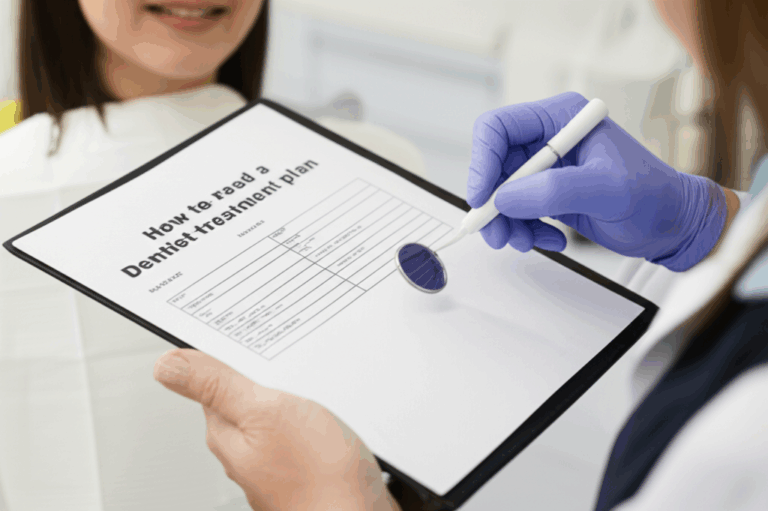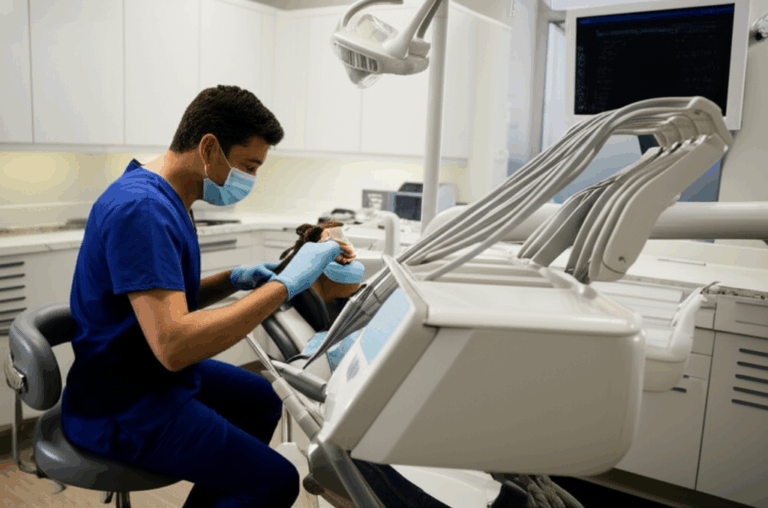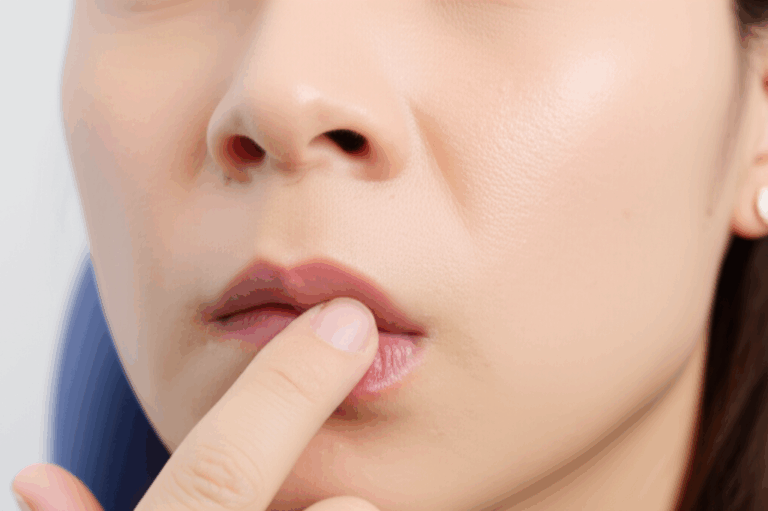
How Long Can You Go to a Pediatric Dentist? The Age Limit, the Science, and Your Guide to a Smooth Transition
That moment sneaks up on lots of parents and older teens. You’re waiting in a dentist’s office with sea creatures on the walls, and you wonder, “Is it time for a new dentist? Am I (or my child) too old to see a kids’ dentist?” You might be a parent who isn’t sure if your tall, braces-wearing high schooler should still see their friendly kid dentist. Or maybe you’re a young adult about to go to college and you’re not sure if you belong in a place with stickers and toy chests.
This is a very common question. If you’re here, you probably want a simple answer—without all the confusing words or reading a million web pages. Maybe you’re even worried that switching now might affect your or your child’s teeth.
Let’s clear things up together. You want real, easy-to-understand advice—and a bit of comfort knowing you’re not the only one wondering about this.
In This Article
What We’ll Cover:
- What Is a Pediatric Dentist and How Are They Different?
- The Usual Age Range: Who Do Pediatric Dentists Treat?
- Why Is There an Age Limit with Kid Dentists?
- Signs It’s Time to Switch
- How To Go from Pediatric to Adult Dentist Without Trouble
- Why Changing at the Right Time Matters
- Can You Stay Longer? Special Reasons to Stay Explained
- The Big Picture: Teeth for Life
What Is a Pediatric Dentist and How Are They Different?
If you’ve ever been to a pediatric dentist’s office, you probably notice it’s different. There are cartoons playing, the walls are bright, the chairs are small, and the workers know how to help a scared little kid. But being a pediatric dentist is about a lot more than cute decorations.
Pediatric dentists are experts in kid’s teeth and mouths.
They train for 2-3 extra years after dental school, learning about:
- How to help kids feel calm and safe
- How baby teeth and grown-up teeth grow and change
- Taking care of kids with special needs
- How things like thumb-sucking or bottles affect teeth
It’s like you wouldn’t take a baby to an adult doctor. So you want someone who truly understands children and their teeth. These dentists make their offices feel safe and fun, so kids and teens can learn good habits for life.
But it’s not just for little kids. Pediatric dentists often see older kids and teens too. That includes braces, wisdom teeth, mouthguards, and food advice.
So, why is there an age limit? It’s because, as you get older, your teeth and needs change—sort of like going through puberty.
The Usual Age Range: Who Do Pediatric Dentists Treat?
Let’s clear things up, since it’s actually not totally black-and-white! Most people think kid doctors only see younger kids. With dentistry, though, pediatric dentists often treat patients all the way up to young adulthood.
According to the American Academy of Pediatric Dentistry (AAPD):
- Pediatric dentists usually see kids from their first tooth (around 6 months old) until age 18.
- Some offices keep seeing patients until 21 years old, and sometimes a bit longer for young adults who need it.
- Kids, teens, or adults with special health or developmental needs might see a pediatric dentist for even longer.
Switching to an adult dentist doesn’t always happen right on your 18th birthday. Insurance rules usually set the limit at 18 or 21—but your teeth don’t always follow those rules. For example, you might finish braces, wisdom tooth surgery, or deal with mental or health needs a little later.
So, here’s an easier way to think about it:
- Most kids: Birth to 18
- Older teens/young adults: 18–21 (sometimes up to 25)
- Special cases: As long as needed, for certain health reasons
So, if you (or your teen) are older than 18 and still at a pediatric dentist, it’s not weird! But there does come a time when you should move on.
Why Is There an Age Limit with Kid Dentists?
You might wonder, “If pediatric dentists are so good with people, why can’t everyone just see them forever?” Great question! The real answer is this: as you get older, you need a different kind of dental care.
1. They Specialize in Kids
Pediatric dentists are really good at:
- Helping baby teeth fall out
- Watching for braces needs as jaws grow
- Keeping an eye on thumb-sucking and similar habits
But as you get older, problems change:
- Gums and gum disease become more common in adults
- You might need crowns, bridges, or false teeth
- Adult dental work requires different skills and tools
Think of pediatric dentists as experts at the start of your dental “story.” When you get older, you want a dentist who knows the chapter you’re in!
2. Helping Kids Feel Safe
Kids and teens need a gentler touch. Pediatric dentists know how to work with nervous or anxious kids—even using safe calming medicines, if needed. Older teens and adults usually need less help like this and can handle more grown-up appointments.
3. The Office Is Kid-Friendly
Everything at a pediatric office is designed for kids. That’s great when you’re young but can feel odd if you’re older. You wouldn’t hang out in the kiddie pool once you know how to swim, right?
4. Learning to Be Independent
Teens start doing things on their own—making appointments, asking questions, even paying bills (especially in college). Switching to a regular dental office helps build these life skills.
In other words:
The age limit is there to make sure you’re getting the best care for your age.
Signs It’s Time to Switch
So, when should you actually leave your pediatric dentist? If you found this article, you probably want a clear answer.
Here are the main things to look for:
Age Rules
- Turning 18 is the usual time to switch (insurance often says so).
- Some pediatric dentists let you stay until 21, especially if you’re still finishing braces or have special needs.
Your Teeth
- Are all your adult teeth in, including wisdom teeth?
- Are you almost done or already finished with braces?
- Do you have no more baby teeth left?
If yes, you’re probably ready for adult dental care.
How You Feel in the Office
- Is your teen okay managing their own appointments?
- Do they feel awkward with little kids at the dentist?
- Are they ready for a more normal, grown-up dental office?
Moving on might be good if they start to feel weird or embarrassed about being in a kids’ office.
The Kind of Dental Work You Need
- Do you need crowns, bridges, gum treatment, or implants?
- Want teeth-whitening or other looks-based work for adults?
A general dentist will be ready for these things.
(Sometimes general dentists work with a dental ceramics lab or crown and bridge lab to make these items.)
If You Have Special Needs
Some kids and teens with autism, dental anxiety, or complicated health problems may need to stay with a pediatric dentist longer. These dentists know how to help with those special situations.
How To Go from Pediatric to Adult Dentist Without Trouble
Change is hard, especially after you’ve been seeing the same dentist for years and trust them. So, what should you do to keep things running smoothly?
Talk First
Speak with your current pediatric dentist. They deal with this all the time—they’ll know what to do and can suggest good general dentists for teens or young adults.
Ask for Suggestions
Get ideas from friends, family, or your dentist. Find a general dentist who:
- Welcomes new patients and young adults
- Has worked with teens before (especially if you’re a little nervous)
- Offers both regular checkups and fixes for problems
Get Your Dental Records
Have your dentist send over all your records (X-rays, notes, plan for braces, etc.) to the new office. This makes the first visit much easier and ensures everyone knows what’s been done.
Your First Visit
Get ready for differences at the new dentist:
- The office will look more regular—not super playful
- You (or your teen) will have to fill out more forms and talk directly to the dentist
- Billing and consent policies may be more grown-up
This is a big step towards managing your health as an adult.
Why Changing at the Right Time Matters
Switching isn’t just a rule. It actually helps your health!
More Kinds of Care
General dentists treat more than just cavities and fillings. They can help with:
- Gum checks and care (very important in adults)
- Making crowns, bridges, and other fixes
- Teeth-whitening and other look-improving procedures
- Planning dental implants if needed, with help from a implant dental laboratory
Growing Up and Taking Charge
You’ll learn to book your own appointments, talk to your dentist, and deal with insurance.
Finding a “Dental Home”
It’s best to have one dentist as an adult—someone who knows your dental history and can take care of you over many years.
Good Health Outcomes
Research shows that teens who switch well to an adult dentist are less likely to have cavities, gum disease, or dental anxiety as adults.
Can You Stay Longer? Special Reasons to Stay Explained
Of course, life isn’t always perfect! Some young adults really do need to stay with a pediatric dentist longer, and that’s okay.
Some examples:
Still Have Braces or Retainers
If you’re still in the middle of braces or have a tough retainer setup, it’s best to finish that plan before you switch. (Want to see how orthodontics uses labs? Check out a dental lab for retainers.)
Afraid of the Dentist
If pediatric dentists are the only ones who can help a very nervous teen feel okay, it’s better to stay a bit longer.
Special Health Needs
People with developmental disabilities, serious medical needs, or other challenges may do best staying with their kids’ dentist.
The Dentist Says It’s Okay
Some offices let patients stay as long as needed, if there’s a good reason. If your dentist is fine with it, don’t stress about the “rules.”
Bottom line:
Do what’s best for you or your child. Being comfortable and getting good care is always the most important thing.
The Big Picture: Teeth for Life
At the end, your mouth doesn’t know the date on your ID. What matters most is that you get care that fits your age and needs, from the best provider.
Remember these points:
- Pediatric dentists specialize in kids and teens.
- Most switch between age 18–21, but sometimes it’s later.
- Talk honestly with your dentist before making a change.
- Moving on smoothly helps you keep a healthy smile for life.
Fast Takeaways
- Most kid dental care goes from baby teeth all the way to about age 18, sometimes to 21 or longer if needed.
- You should change to a general dentist when you’ve outgrown kids’ services, finished braces, and want adult-level care.
- Kid dentists, general dentists, and orthodontists can all work together so you don’t lose track of anything.
What You Should Do Next
One Last Tip
If you care enough to ask questions and want what’s best for your teeth (or your child’s), you’re already on the right track. No matter your age, the real goal is simple: a healthy, confident smile for life.
If you’re looking for more tips for dental visits, check out our dental practical guide for simple advice.
References
- American Academy of Pediatric Dentistry (AAPD) www.aapd.org
- American Dental Association (ADA) www.ada.org
- Centers for Disease Control and Prevention: Oral Health Surveillance
- Studies on teen dental health and dental home changes
Medically checked by an outside dental expert. For any specific questions about your dental care, talk to a licensed dentist in your area.
If this guide helped you and you want more advice, ask for a private chat or bring it up during your next visit. A healthy smile is worth it!








